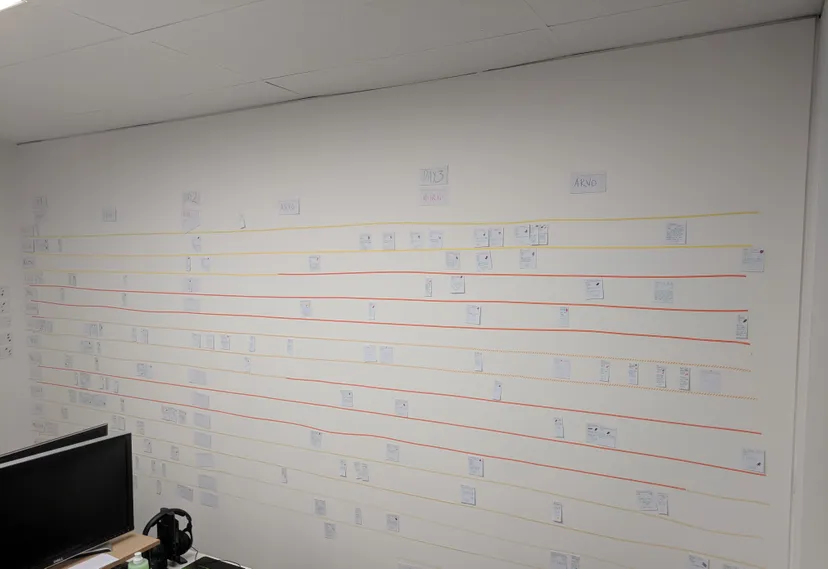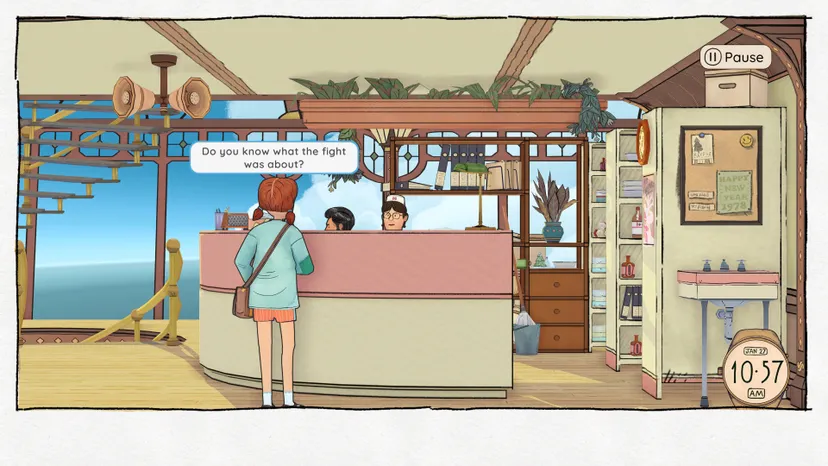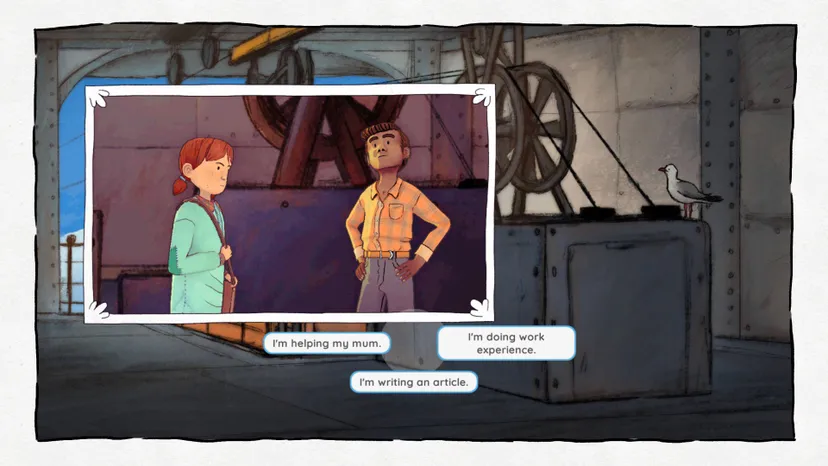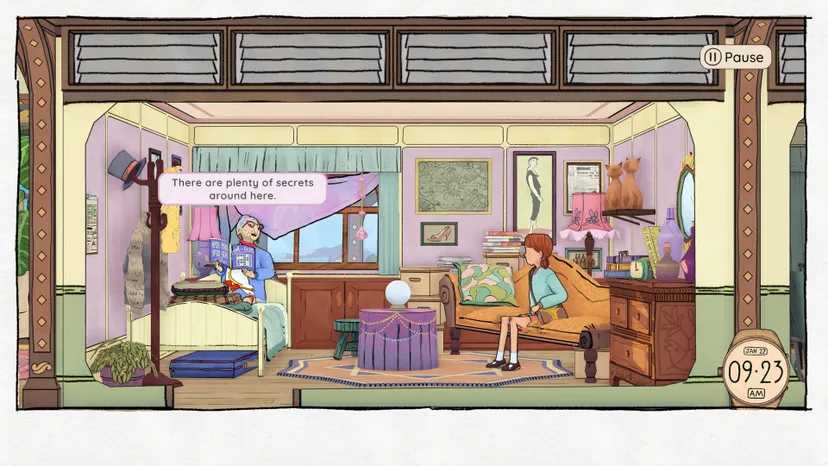Gaming Development
Narrative mapping and simultaneous storytelling in Wayward Strand
Sport Developer Deep Dives are an ongoing sequence with the purpose of shedding mild on particular design, artwork, or technical options inside a online game in an effort to present how seemingly easy, elementary design selections aren’t actually that easy in any respect.
Earlier installments cowl matters such because the technical design of impossible spaces within the M.C. Escher-inspired recreation Thoughts Palace, the transition from digital illustration to indie development with comedian e-book author and artist Meredith Gran of Good Tides, and designing and implementing controls for the mobile port of PC and console title Descenders.
On this version, Jason Bakker, a author on Wayward Strand, discusses the sport’s narrative conceit and the way the crew designed round, and for, the challenges of simultaneous storytelling.
Hello, I’m Jason Bakker, a member of the crew making Wayward Strand, a heartfelt narrative recreation set on an airborne hospital, through which you play as Casey, a teenage woman exploring the hospital and attending to know the sufferers and employees on board.
Impressed by interactive theater productions like Sleep No Extra, and traditional journey video games like The Final Specific, in Wayward Strand we inform a number of, simultaneous tales that overlap with one another throughout the course of three in-game days.
For Wayward Strand, I contributed to a number of components, together with writing, narrative design, recreation design, and programming–each of those alongside different crew members. I’ll go into among the distinctive instruments we’ve constructed to allow this mode of storytelling, in addition to the way it’s affected our design processes and what the outcomes have been.
Setting Out to Sea
When our indie crew, primarily based in Melbourne Australia, got down to make Wayward Strand in 2016, we knew that this fashion of storytelling had been tried a number of occasions earlier than, by video games like Smoking Automotive Manufacturing’s The Final Specific, or considered in ideas like Warren Spector’s ‘One Metropolis Block RPG’. We knew we wanted to determine on some sensible design constraints, which might hopefully make the idea achievable by a small crew. These constraints ended up being fairly counterintuitive to the traditional strategy of recreation design, which I believe partially may come from the truth that, as a crew, we don’t strategy recreation design in a standard manner.

Essentially the most vital constraint we selected was round participant company. If we had been going to make a recreation of this scope as a small crew, we’d need to take the main target away from empowering the participant throughout the story, or making the sport be about selections throughout the story that the participant could make. Over the course of constructing Wayward Strand this has grown and solidified right into a design philosophy of our crew, however initially, it felt fairly radical. Many designers of story-focused video games appear to deal with participant selection inside an interactive story being foundational: it’s what makes video games distinctive, it’s what video games can carry to the desk when taking a look at storytelling media as an entire.
Our idea was that by limiting participant company and not permitting the participant to have a big effect on the tales, that may open up design house throughout the world itself; we’d be capable to create attention-grabbing, overlapping tales which are reactive to the participant, whereas not requiring an inconceivable quantity of branching that takes under consideration the participant making selections that trigger sweeping modifications to the tales.
This can be a large cause why the participant performs as Casey–a teenage woman visiting the hospital who’s requested to spend time with the sufferers by her mum, the top nurse. You’ve acquired a cause to be anyplace and all over the place, however the setting and character counsel to the participant that they wouldn’t be able to essentially altering what’s taking place inside every non-player character’s life (and day by day schedule). Inside that constraint, we discover how Casey can have an effect on folks’s lives, in ways in which is perhaps refined however are nonetheless emotionally vital, and may resonate by these characters’ different interactions.

For the non-player characters, we started the method by mapping out every character’s core storyline(s) and discovered how these could be organized throughout the three days of the sport. In these early levels, after which all through the method of constructing the sport, we’d regularly search for extra methods for characters to work together with one another and with every others’ tales. We ended up with what appears like a number of ‘layers’ of story for every character: layers for specific storylines, layers of interplay with different characters’ tales, then layers for the practical day-to-day life inside an aged care facility.
Implementing the Itinerary
We determined pretty early on that we’d use Unity, which I’d gotten snug with because the lead developer on Armello, together with the ink scripting language, which myself and Russell Dilley, Wayward Strand’s tech director, had accomplished a recreation jam with. We actually loved its elementary constructions and inherent momentum, as in comparison with different storytelling instruments accessible on the time. We started to construct out our prototypes utilizing a mixture of Unity, the ink runtime (we’re utilizing it in a little bit of a bizarre manner, the place we run a number of cases of the runtime without delay, one for every ‘scene’ that’s concurrently enjoying all through the ship), and a customized instrument we inbuilt WPF that’s (mis)named the ‘WaywardScripter’. (It’d be extra correct to name it the ‘WaywardScheduler’, I believe.)

In 2017, when Unity launched the Timeline bundle, we switched our janky customized Unity ‘course instruments’ throughout to make use of Timeline as a foundation, and this settled into the basic construction of how Wayward Strand works internally. The logic of every scene lives inside ink story recordsdata; Timeline is used to direct the characters throughout the scenes (every line of every ink scene has its personal timeline; which means we have now over 20,000 timeline property within the challenge); our customized ‘WaywardScripter’ instrument defines when scenes play all through every in-game day, and the way every characters’ day is structured; after which inside Unity, we have now tons of logic that helps characters get to their scenes, and in addition decides when to play “dynamic” scenes (scenes that happen between Casey and different characters inside particular home windows of time, primarily based on sure necessities).
This meant that myself and Georgia Symons, the opposite primary author, would write all of our scenes primarily based on the plotted-out narrative construction that we developed with the remainder of the sport’s administrators, in addition to fill out dynamic scenes as required. There was vital back-and-forth on this course of, as scene writing affected the narrative construction, requiring new scenes to be added or current scenes to be modified, however as we continued this course of, smaller and smaller modifications had been required, till all of it (just about) settled into place. I most likely shouldn’t undersell how lengthy this took–Wayward Strand releases on September fifteenth, and this course of was ongoing from 2016 during to proper earlier than our VO recording periods began, in February of this 12 months.

A humorous factor about this construction is that the entire recreation, and all of its scheduled scenes, play out no matter the place the participant is, or what they’re doing, at anybody time. This has had ramifications throughout a number of different artistic areas, however I believe the realm that may’ve been affected most is audio. Maize Wallin, our composer and sound designer, needed to create a soundscape that’s reactive to the participant’s selections about the place to be and what to be doing at any time, inside a world the place issues are always taking place that is perhaps completely unrelated to the participant on this specific playthrough, however nonetheless must ‘occur’, in order that the world is in the suitable state when the participant does transfer to that house, or work together with these characters.
Writing for Simultaneity
When it comes to fashion, our scenes began out very linearly; we had been impressed by theater, and had been concerned about limiting participant company as a lot as potential, to see what positive aspects we might get from that. This was effective in scenes between non-player characters, however what we present in scenes that concerned conversations between the participant character and NPCs was that there was little to achieve from the conversations feeling one-sided. Thus, one of many vital phases of modifying on the challenge was to take all of the conversations that Casey was having with different characters and switch them from linear conversations to conversations the place the participant may co-direct the place the dialog was going.
This nonetheless simply felt essentially higher for the player–getting to decide on the place a dialog goes provides you the sensation of being an lively participant, relatively than watching an interplay play out between two different folks.

Fortuitously, in ink it’s very simple to take a dialog the place Casey has a back-and-forward with a personality and switch a number of of the moments the place Casey speaks into choices that now transfer the dialog in a selected course. We had been ready to do that to a higher or lesser diploma primarily based on the context of the second, who you’re chatting with, and so on., and this makes the conversations all through the sport really feel diverse and ‘life-like’: generally you’re in management; at others, the opposite interlocutor takes the reins, and leads you down a completely surprising path.
On the narrative design facet, we additionally developed a ‘core arc’ between Casey and her mom Ruth, the top nurse, that performs out primarily in what we name ‘bookends’–special scenes that happen between Casey and Ruth at the beginning and finish of every day, as they trip the shuttle to/from the airship. Whereas the participant is free to roam all through every day, we now know that they’ve an anchoring narrative all through the course of the sport, alongside what they’re discovering or collaborating in in any of the opposite tales which are taking place round them. Creating the interaction between this anchoring narrative and the entire dynamic tales has been sophisticated but in addition actually enjoyable to determine.

When it comes to the tales that play out when Casey is free-roaming–the overwhelming majority of the game–that’s been one thing the place we’ve simply dedicated to the fact that the participant could don’t know what’s occurring after they arrive in a selected room, at a selected second. They could catch the trailing finish of a dialog; they may enter a room simply as one other character is leaving; they may by no means hear a vital bit of data on a selected playthrough that provides them an understanding of what’s occurring in any certainly one of our main storylines.
We’ve partly simply accepted this as a result of, with a complete playtime of between 3-4 hours, a participant can simply play Wayward Strand once more (and once more) to find extra about what’s occurring throughout the tales. But in addition, we’ve tried to make sure that, no matter if you realize why a selected character is irritated at one other character, or making an attempt to get them to do one thing or no matter, the scenes are nonetheless inherently participating, attention-grabbing interactions.
It’s a ‘drawback’ that turns into a bonus; in most different types of storytelling, a complicated second in a narrative feels both intentional, that confusion being put there for an specific storytelling objective by the creator; or sloppy, revealing the creator’s incapacity to empathize with their viewers. However inside our world, the place tales are always taking place round you, you may be confused by what’s occurring at a selected second, and that’s simply… effective. It’s only a truth of existence inside our world, similar to the true world, and it makes every discovery, or realization, or connecting of the dots, really feel like your individual.
Mooring the Craft
So with all of this work that’s gone into the challenge, how has the experiment turned out? Effectively, we’ll discover out what the viewers response is throughout the subsequent few weeks, however so far as I can inform it’s a brilliant attention-grabbing factor to expertise. When following a selected character for some time, you see their perspective of every thing that’s going on–as they work together with different characters, you see how they arrive into the interplay, what their motivations are, what they’re excited about. Then you may play it once more, comply with one other character into that very same interplay, and see how their ideas and up to date experiences feed into how they understand the opposite particular person, and work together with them.

It feels prefer it provides an interesting dimension of storytelling; a lot extra may be left unsaid inside any scene, as a result of which means can exist just because two moments are juxtaposed in time subsequent to one another; you may solely absolutely comprehend the which means of their interplay throughout the context of every character’s life by following every character’s story.
